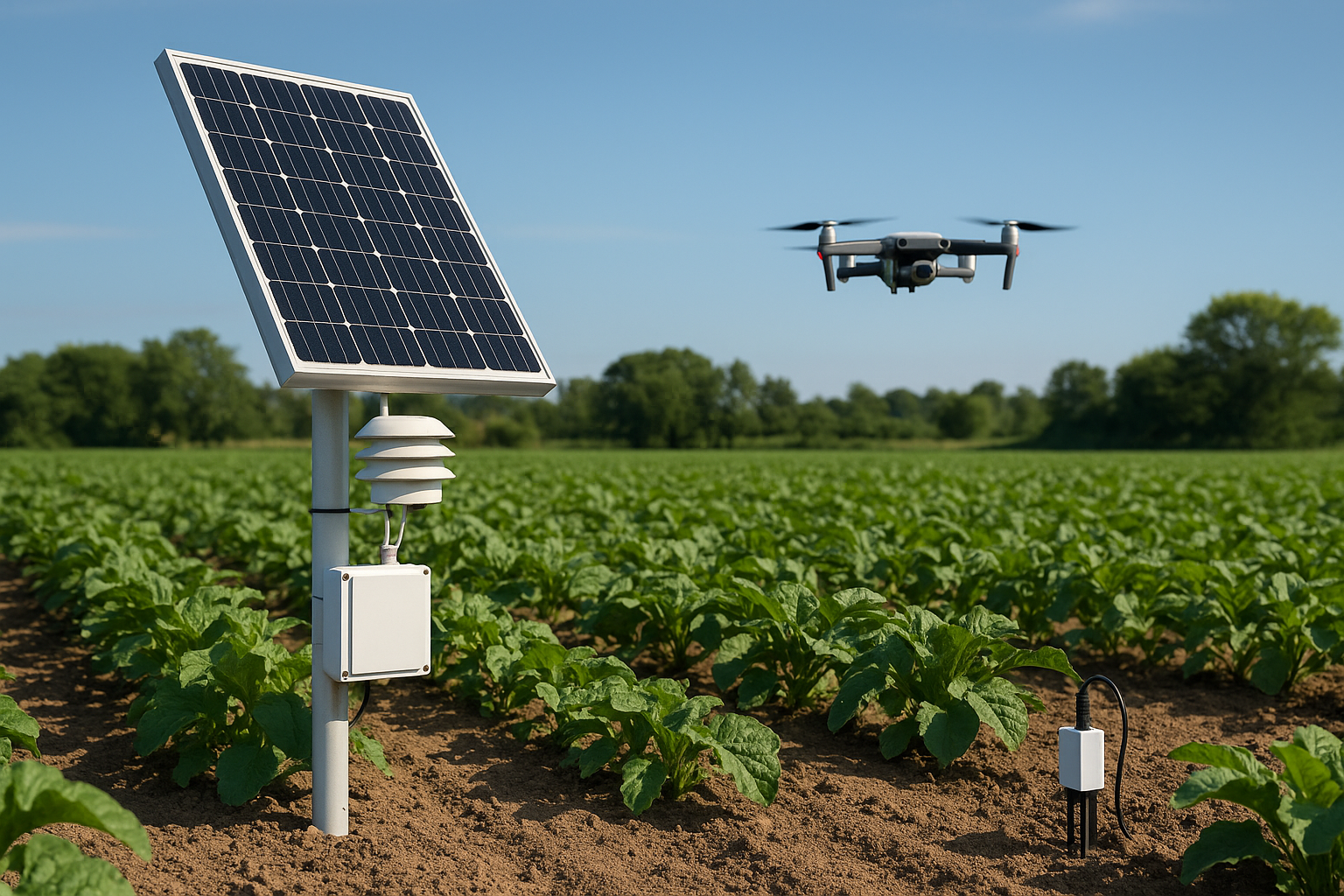Wireless sensors and renewable energy redefine food production systems
Smart irrigation systems exemplify the benefits of these technologies. As described in section 2.2, such systems automatically adjust water delivery based on soil moisture and climatic data, cutting water use by up to 30% while improving yields. In regions such as sub-Saharan Africa and India, where water scarcity is acute, these systems provide a viable solution for efficient water management.

A sweeping transformation in agricultural technology is underway, driven by advances in sensor-based systems and sustainable energy integration. A comprehensive review titled “Innovations in Sensor-Based Systems and Sustainable Energy Solutions for Smart Agriculture: A Review” was published in Encyclopedia (2025, Vol. 5, Issue 2).
Authored by Md. Mahadi Hasan Sajib and Abu Sadat Md. Sayem, the study evaluates recent innovations that are reshaping farming practices, particularly in developing regions where productivity and sustainability are both critical needs.
How are sensor systems enhancing precision and efficiency in agriculture?
The review highlights the pivotal role of IoT-connected sensor networks in transforming traditional agricultural operations. Wireless sensor networks (WSNs) such as MICA2, IRIS, MICAz, and others are used to monitor critical variables like soil moisture, air humidity, temperature, pressure, and crop health.
Smart irrigation systems exemplify the benefits of these technologies. Such systems automatically adjust water delivery based on soil moisture and climatic data, cutting water use by up to 30% while improving yields. In regions such as sub-Saharan Africa and India, where water scarcity is acute, these systems provide a viable solution for efficient water management.
Similarly, smart fertilization systems combine nutrient sensors with decision-support models that include soil nutrient balances and GIS-based mapping. These systems optimize the application of fertilizers while minimizing runoff and environmental harm.
Remote sensing further enhances precision farming. From hyperspectral imaging to thermal and RGB-based systems, these technologies allow real-time monitoring of crop stress, weed density, and nutrient levels.
What role do energy-harvesting solutions play in smart agriculture?
A significant challenge for widespread sensor deployment is energy availability, especially in off-grid agricultural areas. The review identifies energy-harvesting innovations as a linchpin for enabling autonomous and resilient agricultural systems.
Solar energy dominates the field. Various implementations, ranging from photovoltaic (PV) arrays on greenhouses to solar-powered micro-irrigation pumps, have demonstrated success in arid zones like northwestern India. Solar and hybrid energy systems, used to power sensor networks, including devices using ZigBee, RFD modules, and LoRa protocols, support data gathering from air temperature, humidity, and soil moisture sensors, with energy yields ranging from 240 mW to over 3 W.
Beyond solar, the study examines wind turbines, piezoelectric vibration harvesters, microbial fuel cells (MFCs), and water flow energy systems. For instance, wind belts and micro wind turbines can power remote sensors during cloudy seasons, while MFCs extract energy from soil microbes or plant residues to drive low-power monitoring systems. These hybrid setups offer uninterrupted operation, crucial for continuous monitoring and control.
What future directions are identified for scalable, sustainable smart farming?
The review concludes with a forward-looking analysis emphasizing five core research and implementation priorities:
- AI and ML Integration: Future systems will leverage machine learning to interpret sensor data for predictive analysis, optimizing inputs like water and fertilizers. Mechanistic models, when combined with AI, can improve precision in pest management and yield forecasting
- Expansion of Renewable Energy Infrastructure: Emphasis is placed on scaling solar, wind, and microbial energy sources to power not just sensors but also autonomous machinery such as drones and robotic harvesters.
- Affordability and Accessibility: The need for low-cost, scalable solutions is critical, especially in low-income regions. Development of inexpensive sensor arrays, wireless modules, and cloud-integrated dashboards can democratize access to smart agriculture technologies.
- Enhanced Wireless Communication: Technologies like LoRaWAN, ZigBee, and 6LoWPAN offer long-range, low-power communication suited for expansive or rural farms.
- Climate Resilience and SDG Alignment: The paper aligns its vision with UN Sustainable Development Goals, particularly SDG 2 (Zero Hunger) and SDG 13 (Climate Action). AI-driven automation and renewable energy are cited as key enablers of adaptive farming that can withstand erratic weather patterns and resource shortages.
- FIRST PUBLISHED IN:
- Devdiscourse










